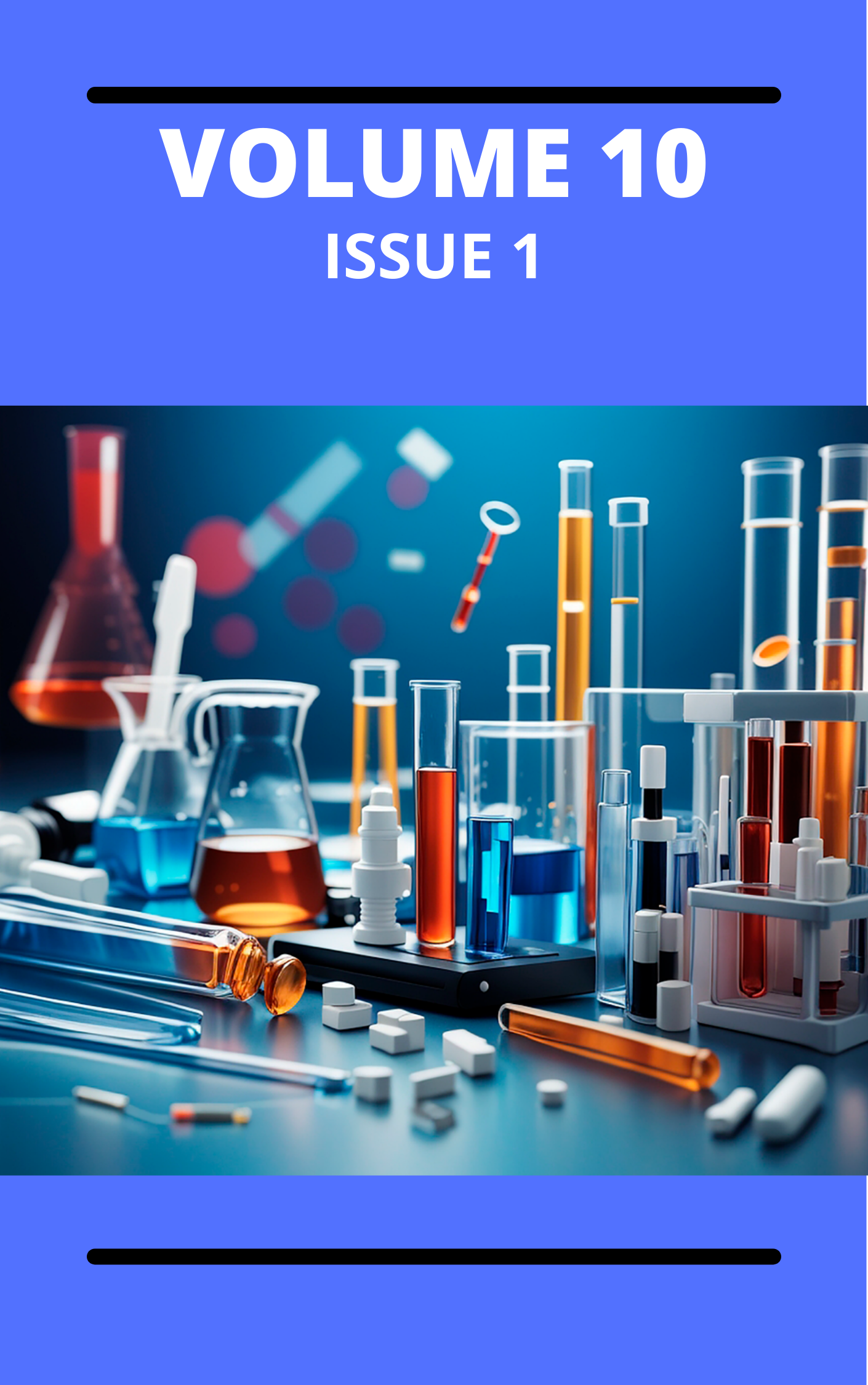Annual Effective Dose Due to Background Gamma Radiation in Buni Gari, Yobe State
Keywords:
Effective dose, Outdoor, Indoor, Background gamma radiation, QuarryingAbstract
In this study, we aimed to assess the levels of gamma radiation both outdoors and indoors in Buni Gari, Yobe State. Our goal was to determine the annual effective dose associated with gamma radiation and to investigate whether the presence of active quarrying companies around the town has had any notable impact on the background radiation levels. Geiger Muller (G. M) detector known as X5C plus, was used to carry out the measurement. To ensure the accuracy of our readings, the G.M detector was positioned one meter above ground level to minimize ground-related effects. During outdoor measurements, we maintained a distance of at least six meters from nearby building walls to avoid any interference from the building materials. Our findings indicated that the average gamma dose rates for outdoor and indoor measurements were 55.8 ± 8.2 nSv/h and 62 ± 6.4 nSv/h, respectively. We calculated the average annual effective dose resulting from background gamma radiation to be 0.372 mSv, which was found to be lower than the global average value of 0.48 mSv. In conclusion, the average annual effective dose from background gamma radiation in Buni Gari was below the global average. When we compared our results with a previous study conducted in 2019 to determine the effective dose of environmental gamma radiation in the same town, we found that the presence of quarrying activities around the town over four years did not significantly change the annual effective dose of Buni Gari
Downloads
Published
Issue
Section
Most read articles by the same author(s)
- Yakubu Mohammed, Habu Tela Abba, Mustapha Suleiman Gimba, Determination of the Gross Alpha and Beta Activity Concentration in Groundwater from Damaturu , Communication In Physical Sciences: Vol. 8 No. 2 (2022): VOLUME 8 ISSUE 2
- Habu Tela Abba, Muhammad Sani Isa, Spatial Distribution of Naturally Occurring Radioactive Materials in Soil and the Consequent Population Effective Dose , Communication In Physical Sciences: Vol. 4 No. 2 (2019): VOLUME 4 ISSUE 2
- Habu Tela Abba, Agada Livinus Emeka, Population Doses from Gamma Radiation Exposure around Damaturu Metropolis, Yobe State, Nigeria , Communication In Physical Sciences: Vol. 5 No. 2 (2020): VOLUME 5 ISSUE 2
- Habu Tela Abba, Miftahu Gambo Idris, Jibrin Suleiman Yaro, Mapping of Terrestrial Radioactivity Levels in Surface Soil. A Case Study of Damaturu L.G.A, Yobe State, Nigeria. , Communication In Physical Sciences: Vol. 4 No. 2 (2019): VOLUME 4 ISSUE 2
Similar Articles
- Aminu Ismaila, Abubakar Sadiq Aliyu, Yakub Viva Ibrahim, Evaluation of Gamma Radiation Dose Level in Mining Sites of Riruwai, Kano, Nigeria , Communication In Physical Sciences: Vol. 8 No. 1 (2022): VOLUME 8 ISSUE 1
- Aminu Ismaila, Abubakar Sadiq Aliyu , Yakub Viva Ibrahim, Evaluation of Gamma Radiation Dose Level in Mining Sites of Riruwai, Kano, Nigeria , Communication In Physical Sciences: Vol. 8 No. 1 (2022): VOLUME 8 ISSUE 1
- Uzochukwu Anekwe, Evaluation of Radioactivity Levels in the Federal University Otuoke Laboratories, Bayelsa State, Nigeria. , Communication In Physical Sciences: Vol. 12 No. 6 (2025): Volume 12 ISSUE 6
- Uzo Anekwe, Assessment of Background Ionizing Radiation and Radiological Health Risks in Federal Government Girls’ College, Imiringi, Nigeria , Communication In Physical Sciences: Vol. 11 No. 2 (2024): VOLUME 11 ISSUE 2
- Rashida Adamu Bulkachuwa, Bello Y. Idi, Musa Muhammad Salihu, Abdullahi Lawal, Salisu Tata, Evaluation of Excessive Lifetime Cancer Risk Due to Gamma Radiation on Rocks in Shira Village, Bauchi State Nigeria , Communication In Physical Sciences: Vol. 11 No. 4 (2024): VOLUME 11 ISSUE 4
- Habu Tela Abba, Agada Livinus Emeka, Population Doses from Gamma Radiation Exposure around Damaturu Metropolis, Yobe State, Nigeria , Communication In Physical Sciences: Vol. 5 No. 2 (2020): VOLUME 5 ISSUE 2
- Ahmed Usman`, Abdulakeem Oladipo, Hameed Momoh, Gadisa Megersa, Assessment of Radiation Dose Rates at the Faculty of Engineering, Ahmadu Bello University, Zaria , Communication In Physical Sciences: Vol. 12 No. 5 (2025): Vol 12 ISSUE 5
- Habu Tela Abba, Muhammad Sani Isa, Spatial Distribution of Naturally Occurring Radioactive Materials in Soil and the Consequent Population Effective Dose , Communication In Physical Sciences: Vol. 4 No. 2 (2019): VOLUME 4 ISSUE 2
- Olusegun Sawole, Kolawole Abiodun Egunjobi, Adebola Daniel Awofodu, Health Risk Assessment of Natural Radionuclides Ingestion from Selected Edible Crops in Farmlands Around Limestone Excavation Area in Ewekoro, Ogun State , Communication In Physical Sciences: Vol. 9 No. 4 (2023): VOLUME 9 ISSUE 4
- Olusegun Sowole, Adesoji A. R. Adebambo, Radiological Assessment of Primordial Radionuclides in Crab Species from Igbokoda River in Southwest of Nigeria , Communication In Physical Sciences: Vol. 7 No. 1 (2021): VOLUME 7 ISSUE 1
You may also start an advanced similarity search for this article.




